Bookmark’s Early Access version of award-winning board/card wargame Undaunted Normandy hits Steam later today. I’ve spent four hours in its company thus far and experienced these emotions while playing it: confusion, excitement, admiration, satisfaction, and disappointment.
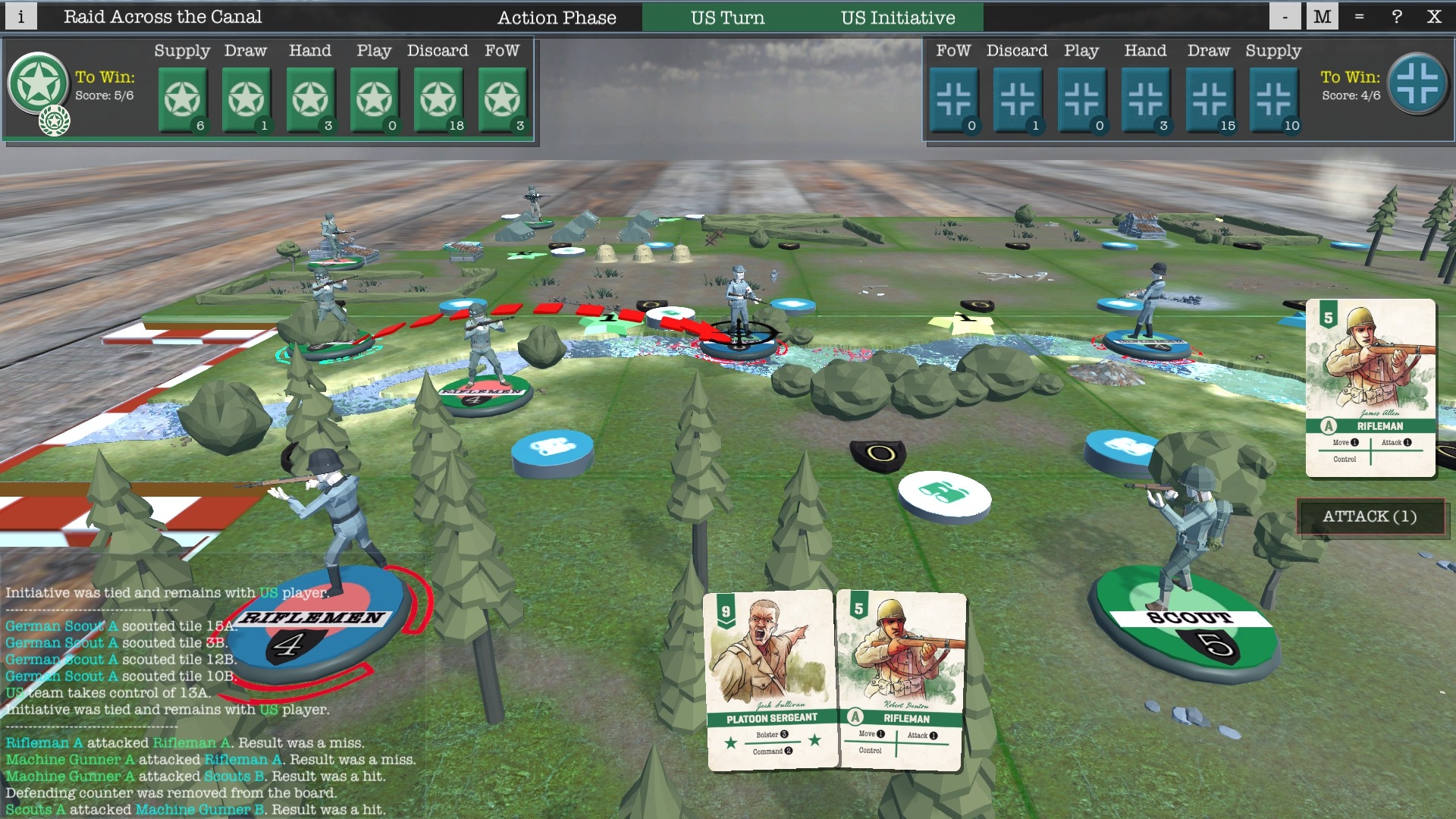
Ninety-nine percent of the disappointment stemmed from the graphics. Two options are offered. Inconsistent texturing and scaling, and unappealing soldier models mean the 3D visuals are unlikely to garner many compliments.
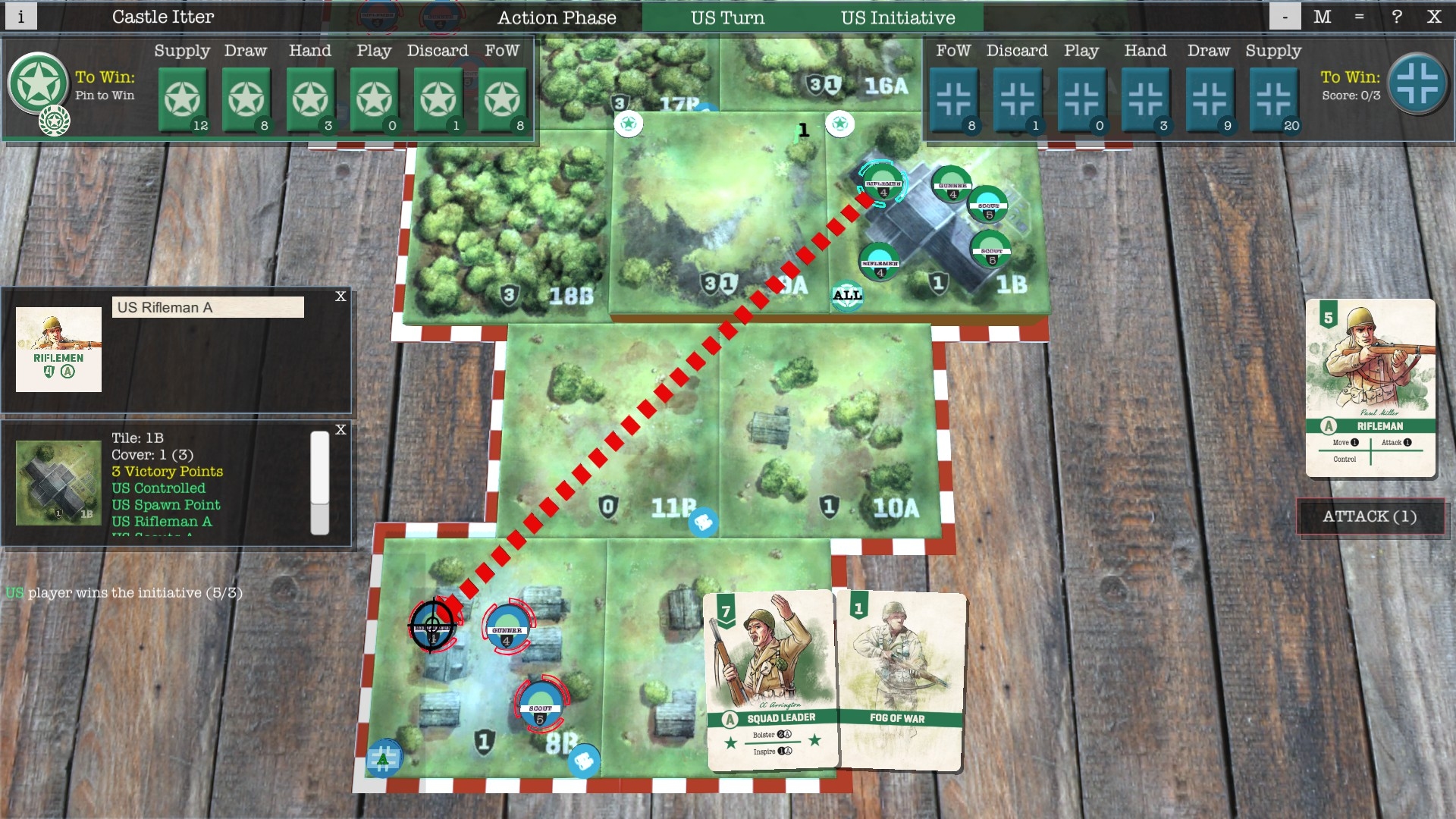
Unfortunately, the 2D alternatives aren’t particularly attractive either, which is odd considering analogue Undaunted Normandy – and its Tabletop Simulator module – are pretty easy on the eye.
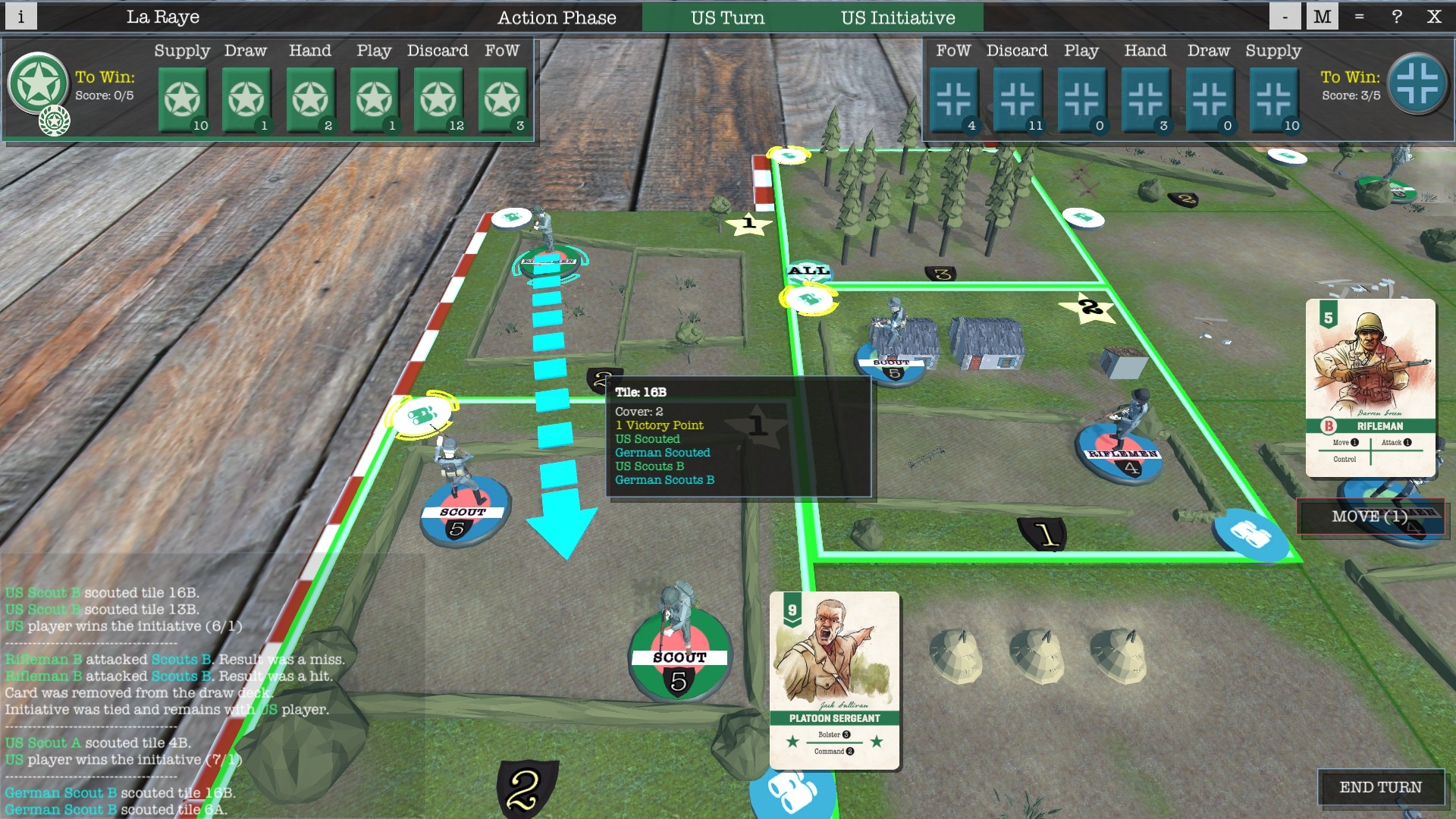
The mild confusion I experienced won’t be an issue if you’ve played the cardboard original before, but it does suggest the game’s brief interactive tutorial and embedded manual could be improved. David Thompson and Trevor Benjamin model WW2 skirmishes in a decidedly unorthodox manner (see on), and until I watched tutorial videos like this one and played for an hour or two, the significance of the various card piles at the top of the screen, and the value of actions like ‘bolster’ and ‘hunker down’ didn’t fully sink in.
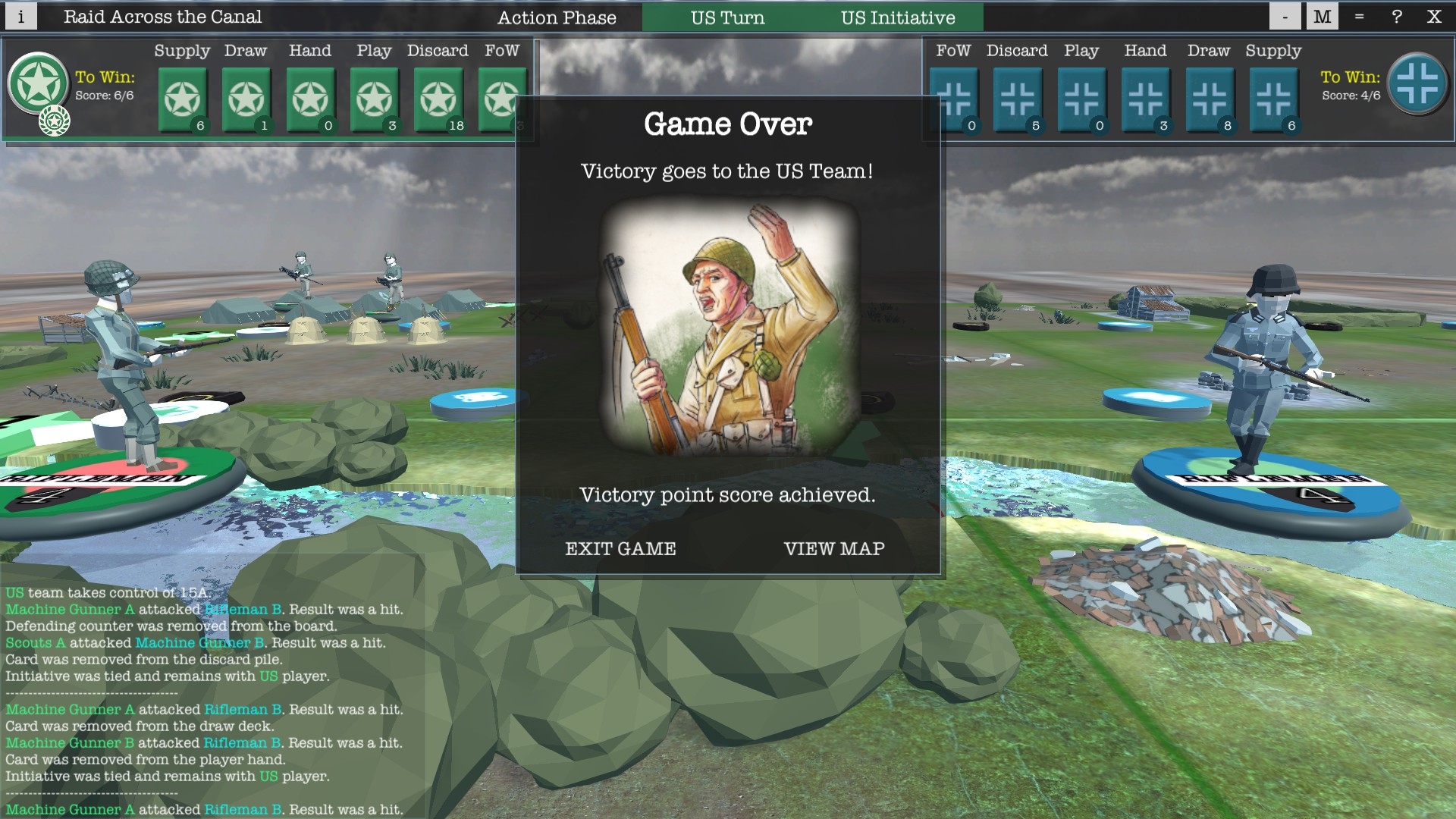
By the two-hour mark I’d finally engineered my first win and almost all of my confusion had transmuted into admiration.
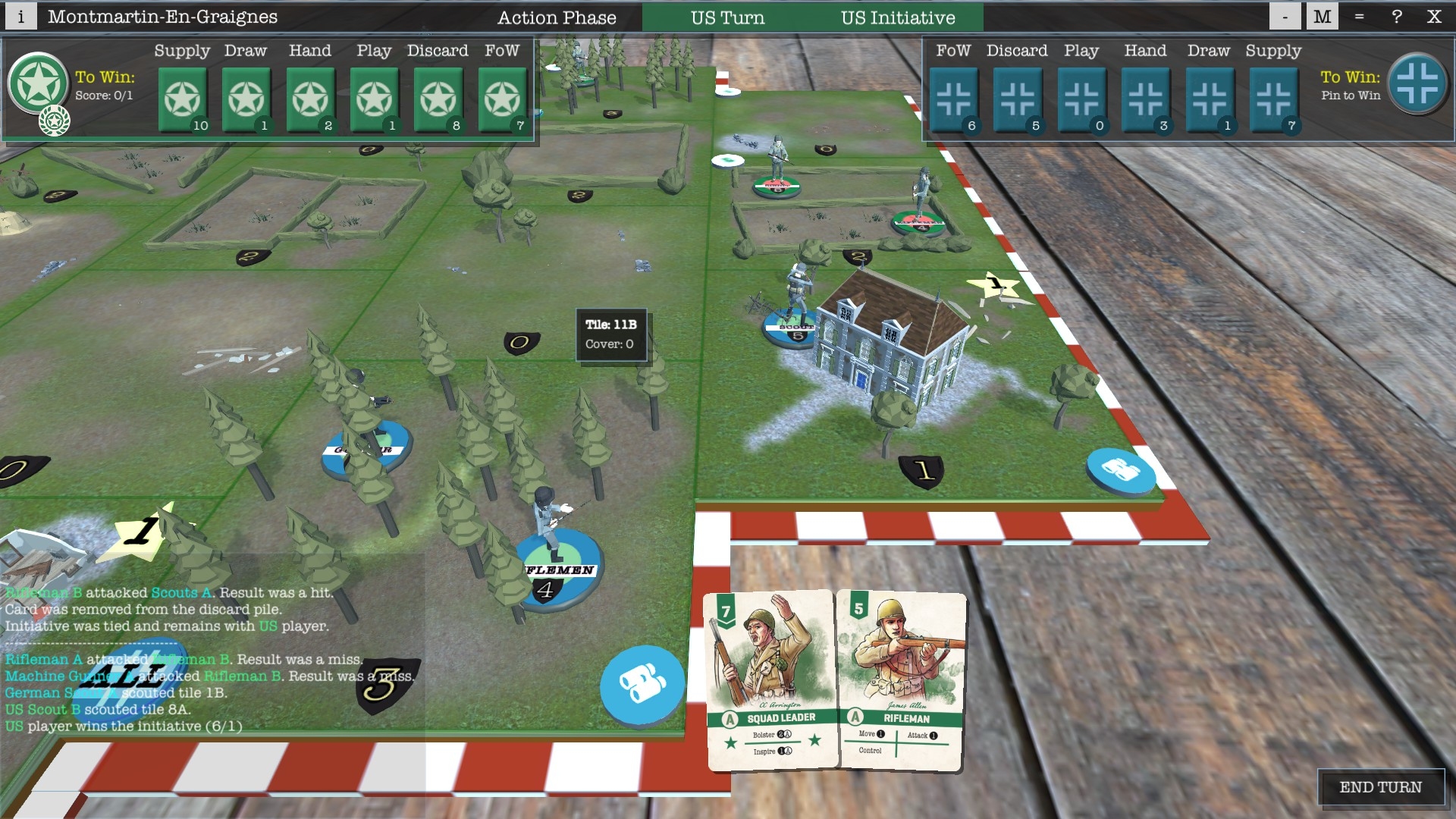
Unlike most of the tactical WW2 board wargames I’ve encountered, UN owes feck-all to Advanced Squad Leader. Although you never need to ponder LoS, consult extensive Combat Results Tables, or grapple with complex turn phasing, the game’s card-driven scraps rarely feel simplistic or far-fetched. Elegant abstractions communicate tactical truths like the importance of leadership, scouting, and cover, and the power of mortars and LMGs, with incredible lightness. We get the nailbiting drama and the difficult decisions, but are spared the torturous combat maths and the stultifying IGOUGO tit-for-tat rat-tat-tat.
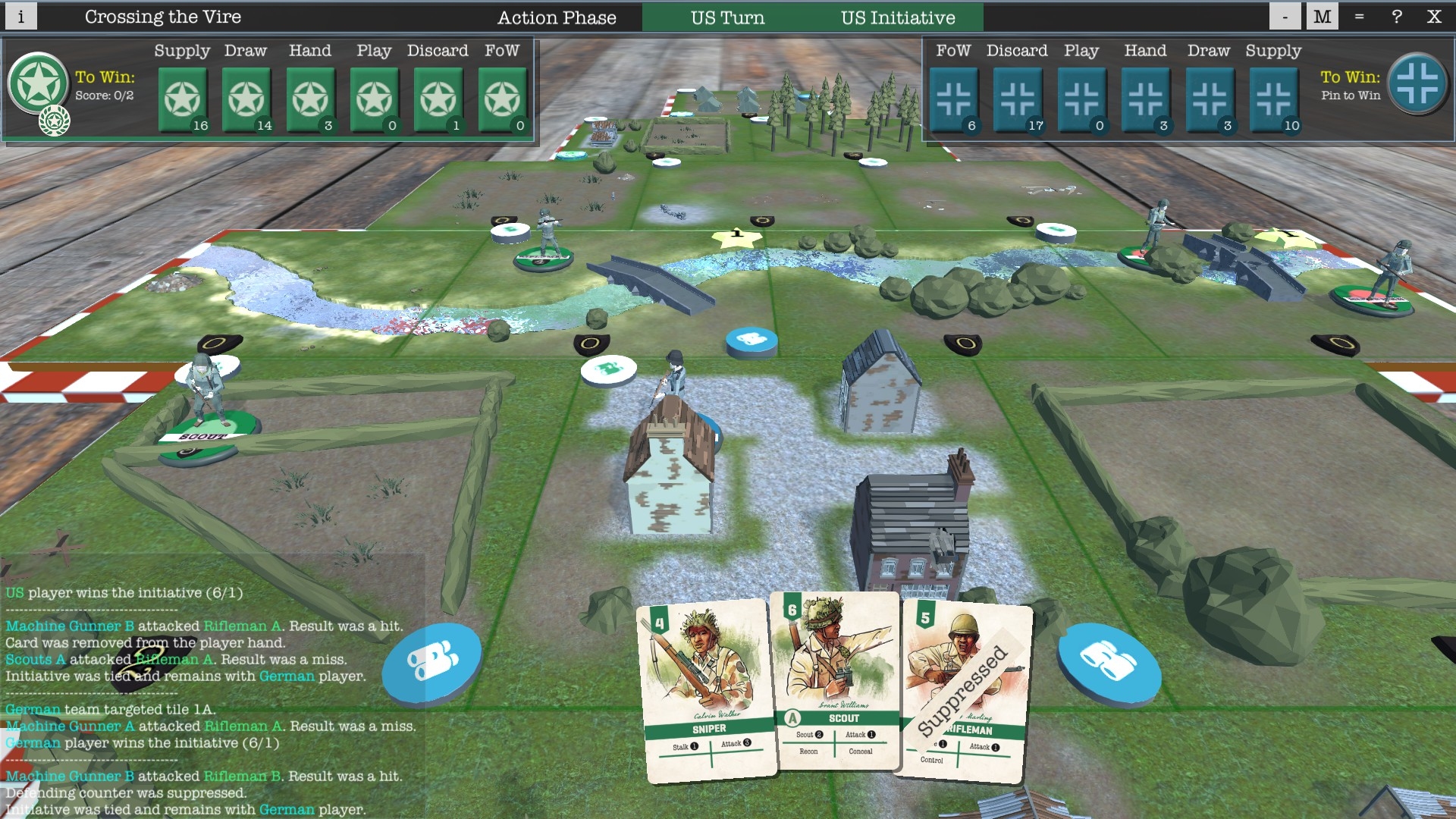
At the heart of the game is a natty card-based activation system. You can only move a combatant or launch an attack with one when you play an appropriate card (Rifleman, Scout, Machine Gunner etc). A fresh hand of four cards is drawn at the start of every turn.
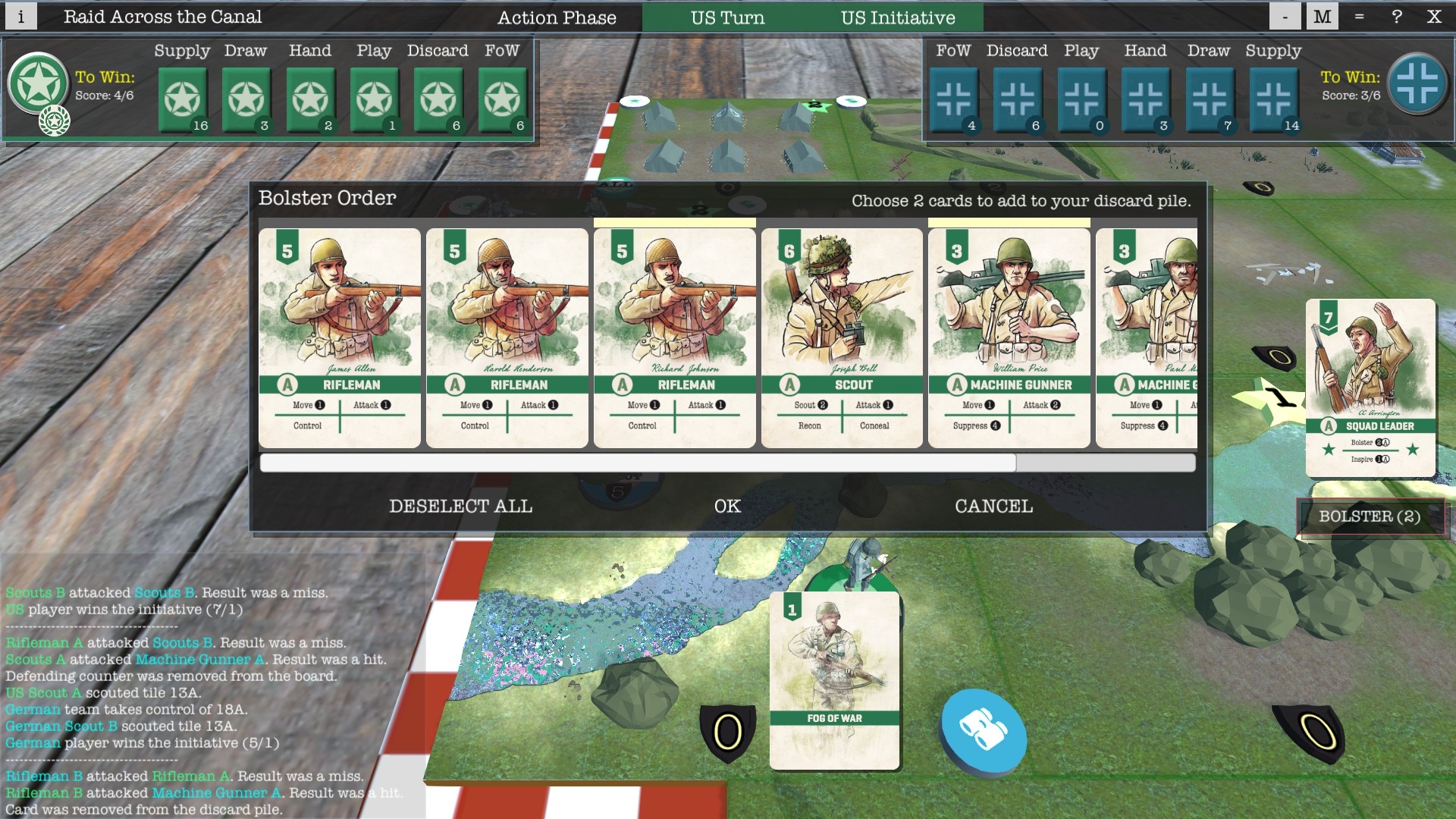
Cards like Platoon Sergeant and Squad Leader represent incorporeal soldier shepherds and allow you to replenish and re-balance your ‘draw deck’ and recycle previously used cards. Fog of Wars added to and removed from decks by recon-related actions simulate battlefield confusion by polluting decks with almost useless chaff.
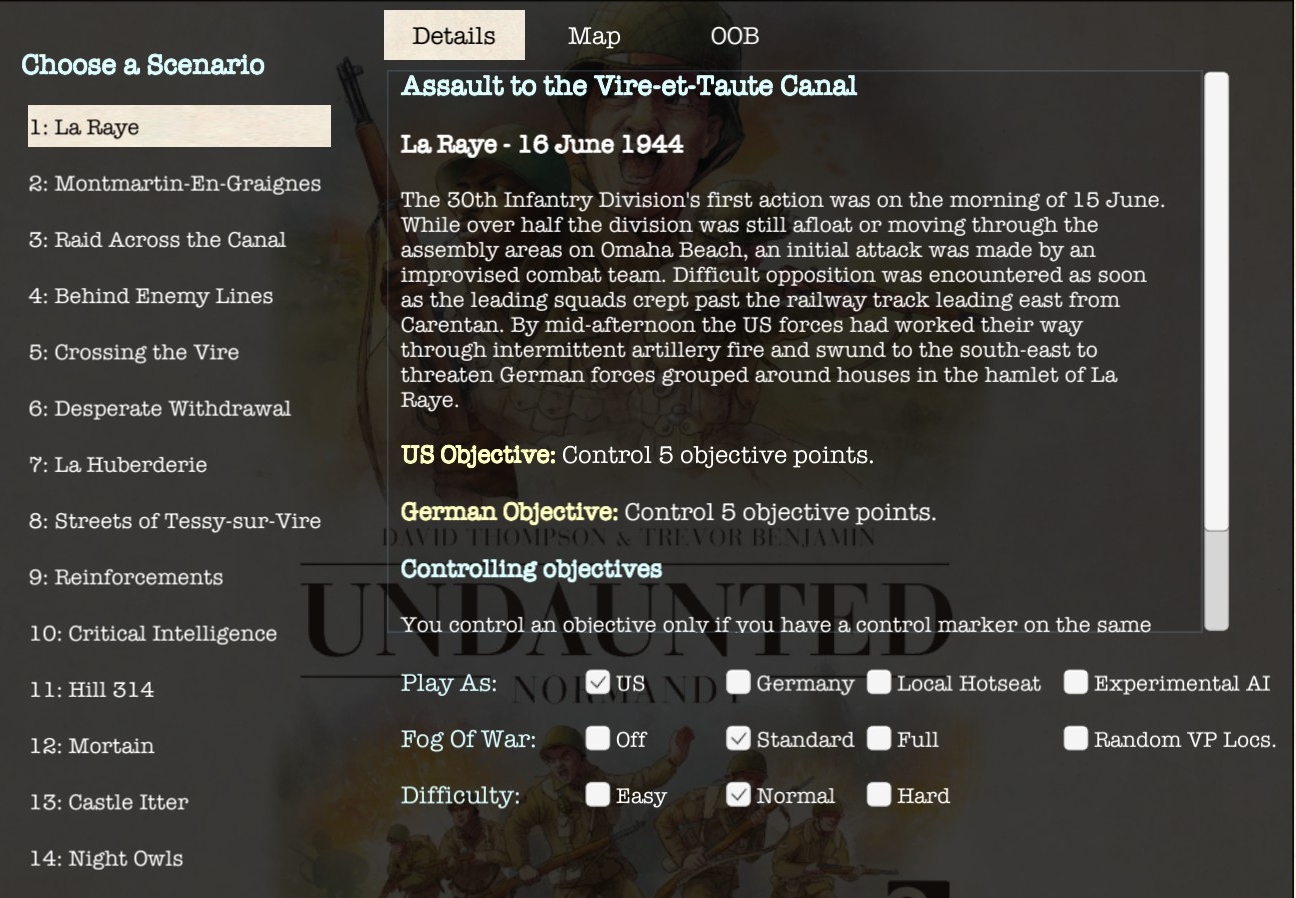
The launch build comes with fourteen scenarios, three difficulty settings (‘Easy’ = +1 to hit, ‘Hard’ = -1 to hit), multiplayer support, and an AI that seems to know what’s what. The fickleness of dice and cards, the ability and reactivity of that artificial opponent, and an optional VP location randomiser, means missions should entertain as competently on their twenty-first airing as they do on their first.
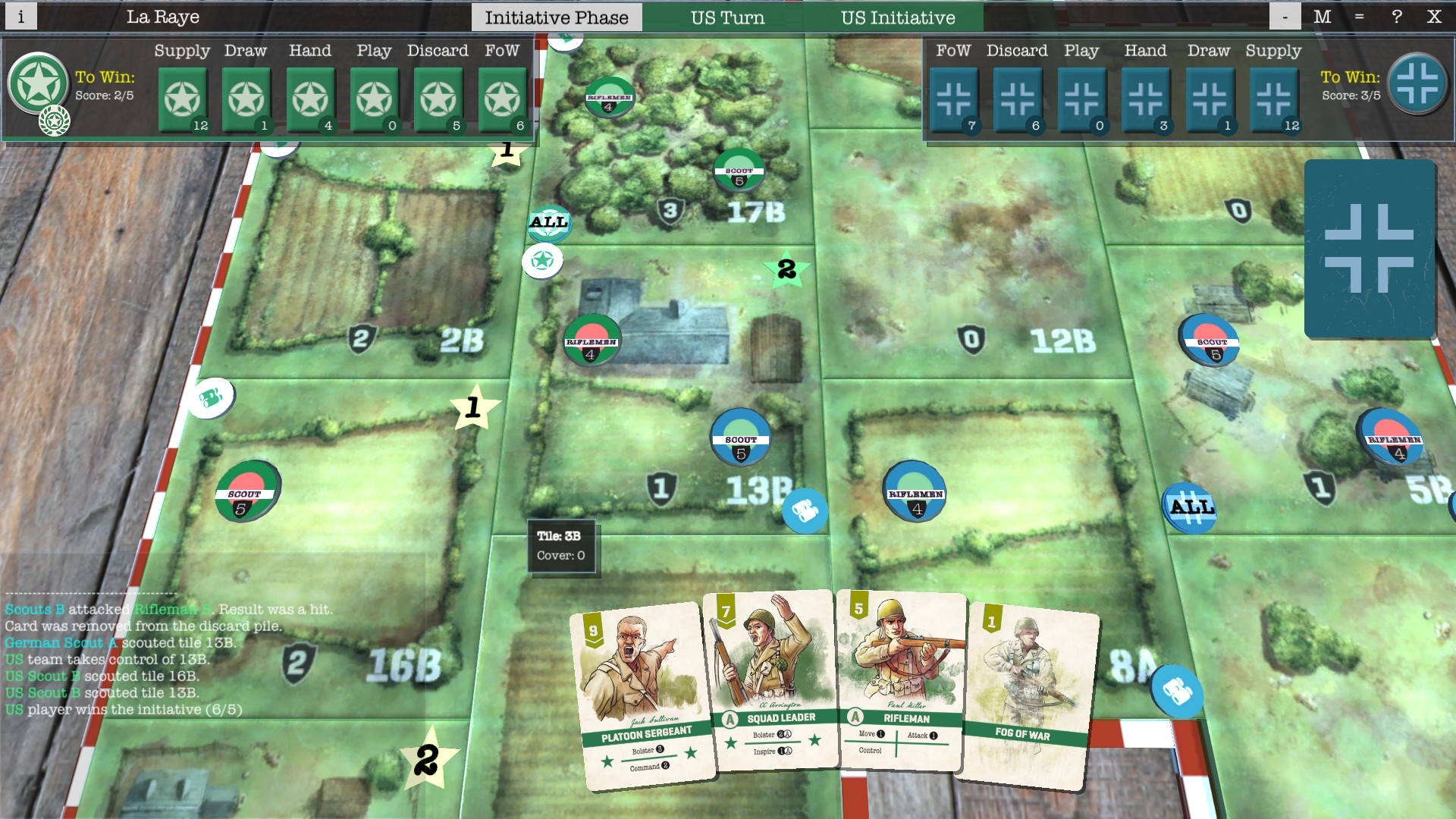
By the time the next instalment of this rolling review appears early next week, I hope to be able to speak authoritatively about the strengths and weaknesses of Undaunted’s silicon adversary, and be in a position to tell you whether the one bug I encountered during my initial session (a minor impasse, fixed by going back to the main menu and clicking ‘CONTINUE GAME’) is travelling alone or in company.

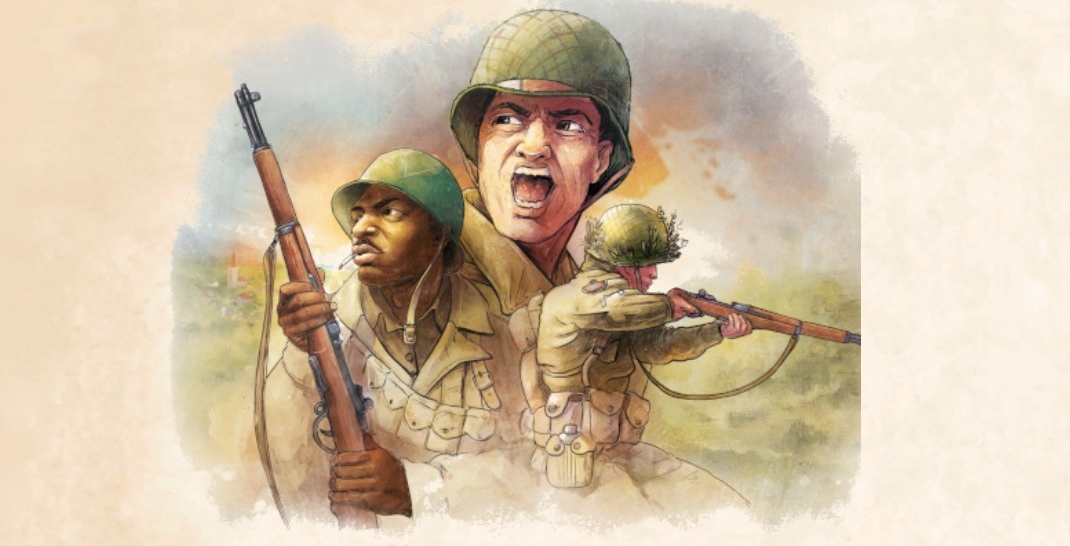
I will be watching this one closely. I hope there will be a mobile version, would love to play this on the iPad while commuting to / from work.
I love the Undaunted board game series but don’t often have an opponent aside from myself, so very much looking forward to this PC version!
If you are looking for multiplayer I would heartily recommend the tabletop simulator. The Undaunted module works very well, costs nothing und looks great, as Tim pointed out. You could try picking up an opponent via its lobby, too.
And there is the Tally-Ho Corner discord. Since I hardly use discord myself, I do not know how easy it is to find the right channel? room? A quick browse on the website didn´t reveal a link, but I am sure another cornerite would be willing to provide one, if neccessary.
Hi Tim, good to see you doing what you are so excellent at. Was a bit confused by your departure from RPS, but you were always one of the best parts of that site (which has experienced a precipitous drop in quality in the intervening time). Cheers!
Morale +1. Thanks.
Welcome to Tally-Ho Corner!
Really lookin forward to read the next installment of this review! I bounced off the Early Access version long ago, confused by illegibility and innovation that lacked explanation. Always glad to give a second chance to a possible diamond in the rough
I’ve played a fair bit of another card-driven cardboard wargame, Command and Colors. It’s interesting in that the relatively high degree of abstraction produces much more “realistic” results (especially given the ancient setting). Lost to history are the reasons why Kerblunkius Maximus’ right wing sat stationary while the rest of the army was overwhelmed by the Carthiginians, but now you know: he just couldn’t seem to draw the right card.
By coincidence, I played the boardgame just yesterday! With 3 games under my belt, versus two opponents, I might have an opinion, but am far from knowldgeable. And, obviously, I do not aim to steal Tim´s thunder. Still, I feel like raving about this.
For me, personally, this is an ace game. The bees of the knees. Etc. It provides many of the rushes of a wargame, but manages to do so in a very light package with only a handful of moving parts. You can set up and play a game easily in 1,5 to 2 hours. You might just convince your buddies, who would otherwise shrink from the immensity of the wargames we love, to give it a go. Tim rightly calls it elegant.
Once you wrap your head around that you have a deck, plus a discard pile and a separate reserve (`supply`) which leaders allow you to insert cards from into the cycle, everything else comes naturally. You draw 4 card and use one to bid for initiative. Then you use one of the actions from each of the other three. Then your opponent goes. First one to get X VP wins. Simple. Yet you will agonize about every little decision.
Is it really worth sacrifizing your platoon leader card to go first this round? Play it safe or count on drawing the machine gunner next round? Only 5 cards left and you get 4 of them! Additionally, cards in the cycle are functionally Hit Points. If you wanted to push the riflemen from Squad A forward quickly, you want many of their cards in the cycle, and few of Squad Bs´ cards. But that means a lucky shot or two could wipe B from the board. Action economy is the name of the game, which makes the relatively small-scale deckbuilding interesting and tantalizing.
The different units all have their respective roles to play. And each is a trade off. There are Scouts who…scout, which is neccessary so other units can enter tiles, but clogs up your deck with Fog of War. Riflemen can tank better, but must get going, since only they can take possession of victory points. Machine gunners throw more attack dice, but might want to surpress enemy units instead, forcing them to forego an action. Mortars and Snipers are also modeled and expansion sets will introduce vehicles.
A wargame purist might be a bit leery of the fact that scenarios can swing around at the last moment. But a) this is a platoon level game. Sudden turnarounds are far from unknown and b) silicon opponents might not mind, but making the living and breathing variety play on for 30 minutes after their doom became inevitable, is bad.
All the scenarios are asymetrical. Having played the first (La Raye) twice, I can attest that there is no script. It plays out differently each time. The first game was a wary skirmish with a sudden race for the objective at the end while the second time he two sides clashed frontally and we piled 14! corpses in that bloody, damnable barn. We could identify no obvious golden path, only equally risky alternatives.
Albeit small, the game asks you to make decisions on very many different levels. Which is wonderful.
For now, my only gripe was that the rulebook hid away the explanation of what the `paying area`is. It is the cards you already used this turn. That´s all it is. An (important) action of the Squad Leaders refers to it.
My apologies for the lenght of this post. I really felt like raving about this game. 🙂
You’re welcome to “steal my thunder” whenever you like, g948ng. Great review!
Thank you.